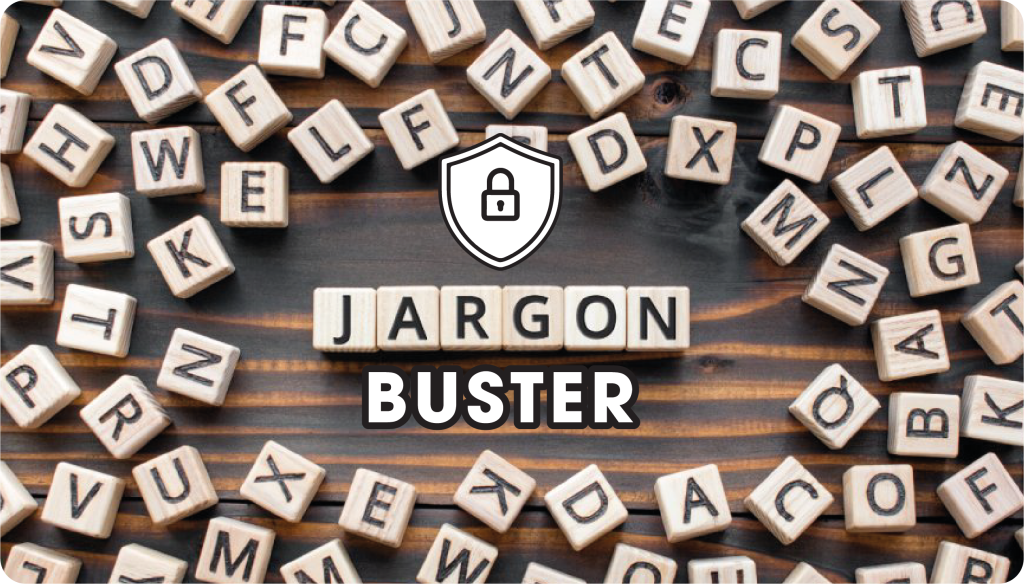Jargon Buster: Demystifying IT Terminology
Cybersecurity Edition

Jargon Buster
The jargon buster aims to give simple, plain English explanations of typical words and/or phrases used in security and cybersecurity, making it easier to stay informed.
Zero Trust:
Security approach assuming no inherent trust, requiring continual user and device authentication.
Phishing:
Cyberattack where malicious actors impersonate entities to trick individuals into revealing sensitive information.
Ransomware:
Malicious software encrypting files, demanding ransom for decryption; paying does not guarantee data return.
Malware:
Malicious software (viruses, Trojans, worms, spyware) designed to harm or exploit computer systems.
Penetration Testing (Pen Test):
Simulating cyberattacks to identify system vulnerabilities and weaknesses.
Multi-Factor Authentication (MFA):
Security process requiring two or more forms of identification for enhanced login security.
Firewall:
Network security device or software filtering traffic based on predefined rules, acting as a barrier between trusted and untrusted networks.
Encryption:
Converting data into code to prevent unauthorised access, ensuring unreadability without decryption key.
Cyber Threat Intelligence (CTI):
Information about potential cybersecurity threats, including tactics employed by malicious actors.
Incident Response (IR):
Structured approach to addressing and managing the aftermath of a cybersecurity incident.
Patch Management:
Regularly updating software, operating systems, and applications to fix known vulnerabilities.
DDoS Attack (Distributed Denial of Service):
Attack flooding a target system with traffic from compromised computers (botnets).
Vulnerability Assessment:
Identifying, classifying, and prioritising security vulnerabilities in systems, networks, and applications.
Two-Factor Authentication (2FA):
Security process requiring users to provide two authentication factors for enhanced login security.
Endpoint Security:
Protection of individual devices from cybersecurity threats.
Data Breach: Incident where sensitive data is accessed, disclosed, or stolen by unauthorized individuals or entities.
Security Audit:
Evaluation of an organisation’s security policies, practices, and controls for effectiveness and compliance.
SOC (Security Operations Centre):
Centralised unit monitoring, detecting, and responding to cybersecurity incidents in real-time.
DMZ (Demilitarised Zone):
Network segment separating internal and external networks, often used for public-facing services.
SIEM (Security Information and Event Management):
Software providing real-time analysis of security alerts from various network sources.
Want to learn more about our services?
Other Articles & Blogs
The Internet of Things is Changing – Is Your Business Ready?
Emerging Internet of Things Shaping 2025 The Internet of Things (IoT) is evolving rapidly, transforming industries with smarter, more efficient solutions. As businesses integrate IoT into their operations, staying ahead of key trends is crucial. Here’s what’s shaping...
Game-Changing IT Innovation is Here!
Game-Changing IT Innovation is Here!What’s New at Unity – Innovation, AI & the Tech ShopAt Unity, we’re always pushing the boundaries of IT solutions to help businesses thrive. Fresh off our recognition as the Most Intelligent Company at The Teesside Charity’s...
People-Powered IT Support: The Heart of Unity World
People-Powered IT Support: The Heart of Unity WorldDriving Innovation Through People At Unity World, we believe that people are the driving force behind everything we do. Even in a world dominated by technology, AI, and automation, it’s our talented team who bring the...



